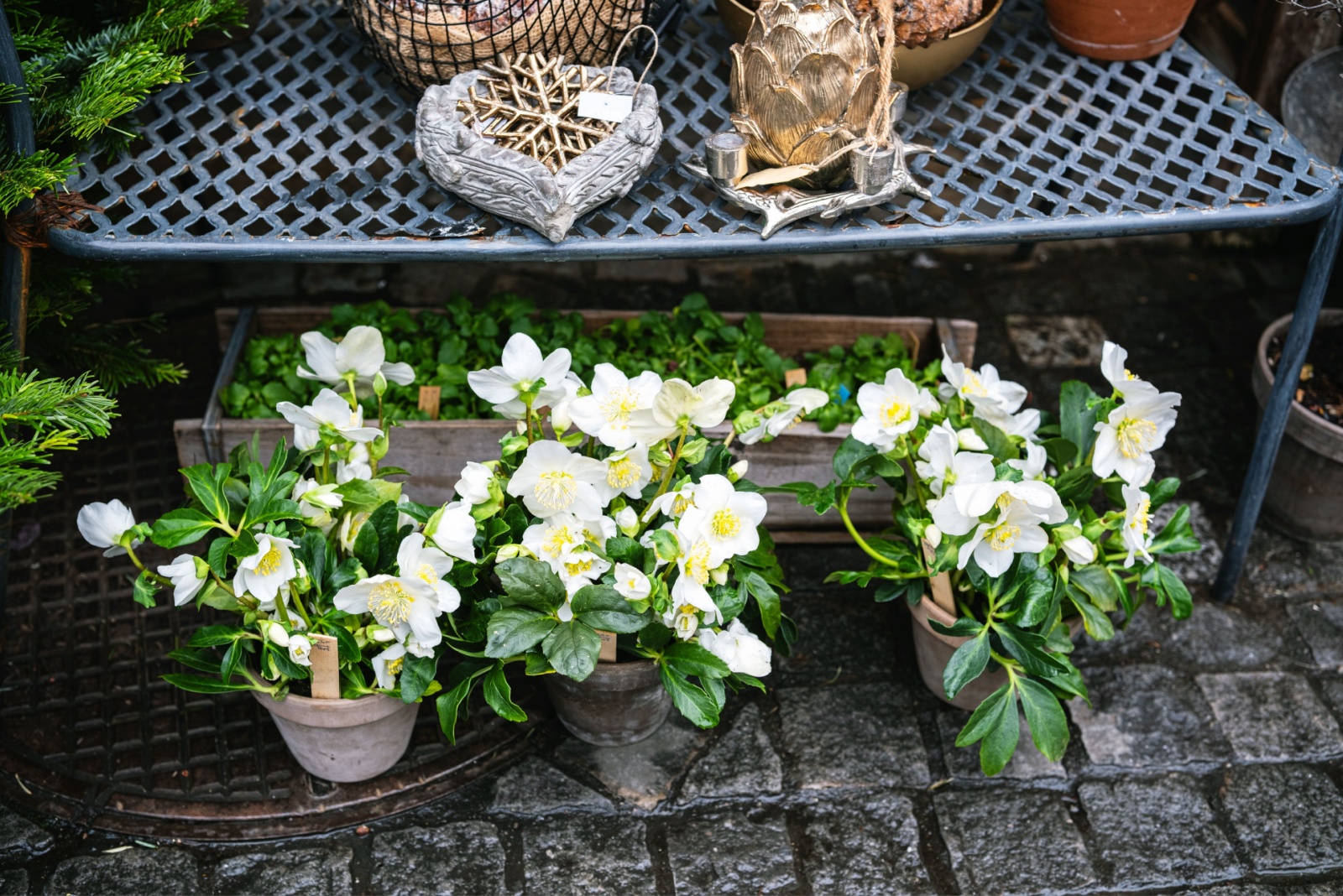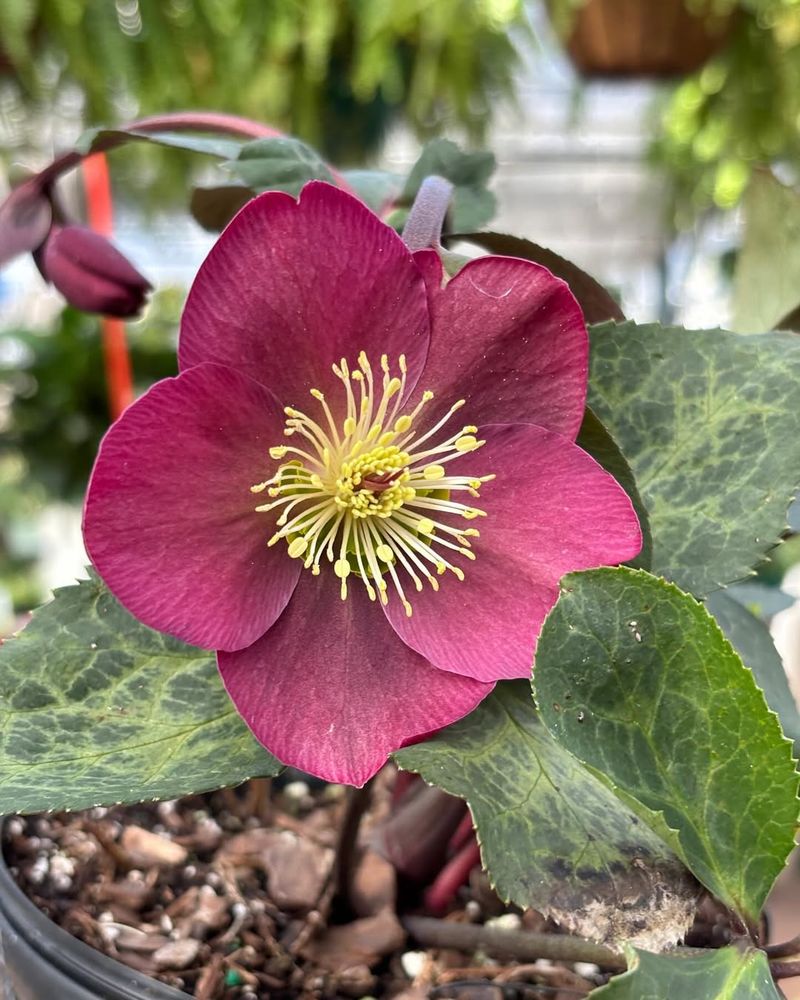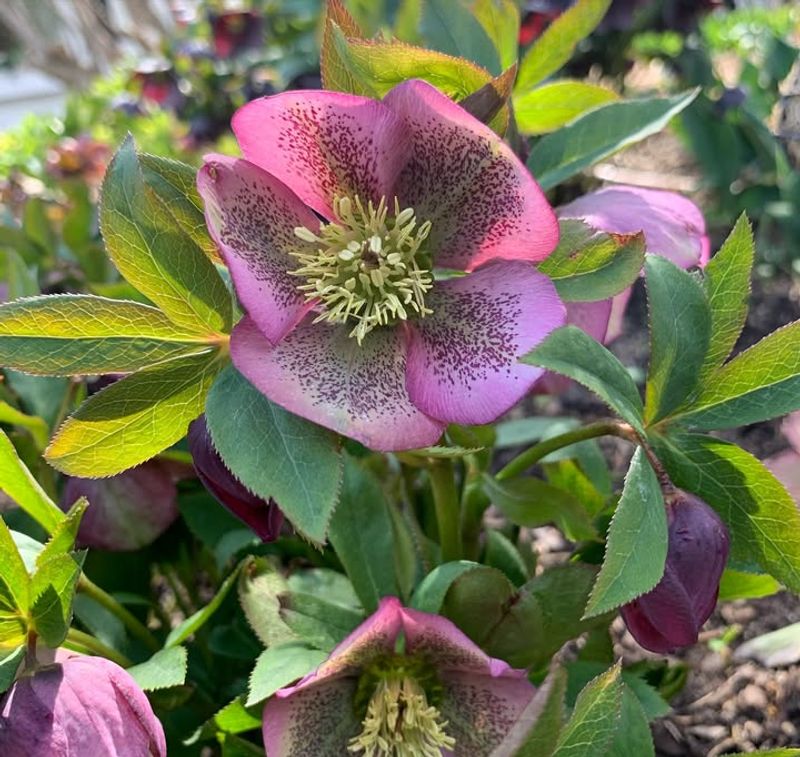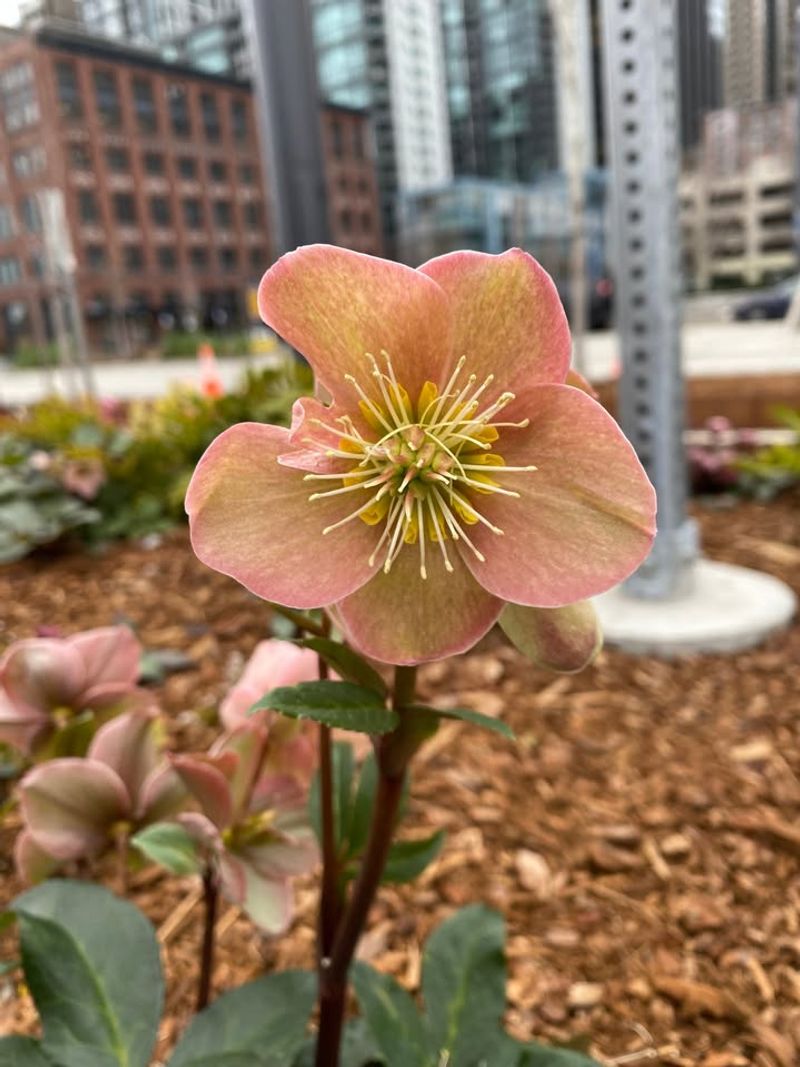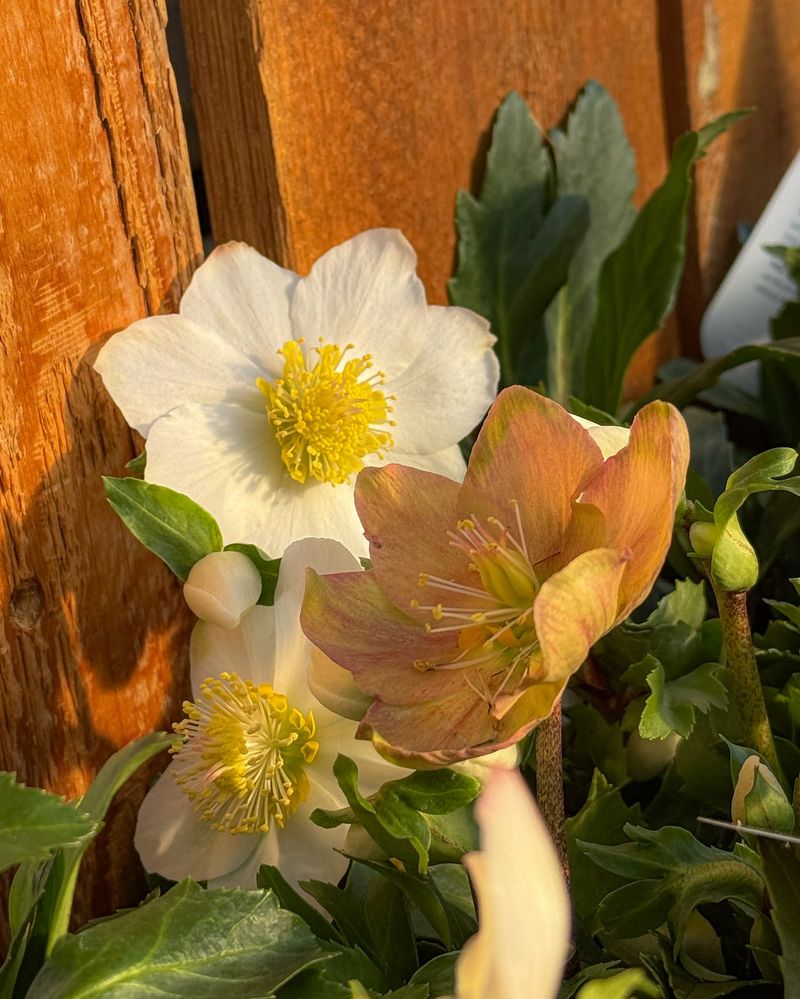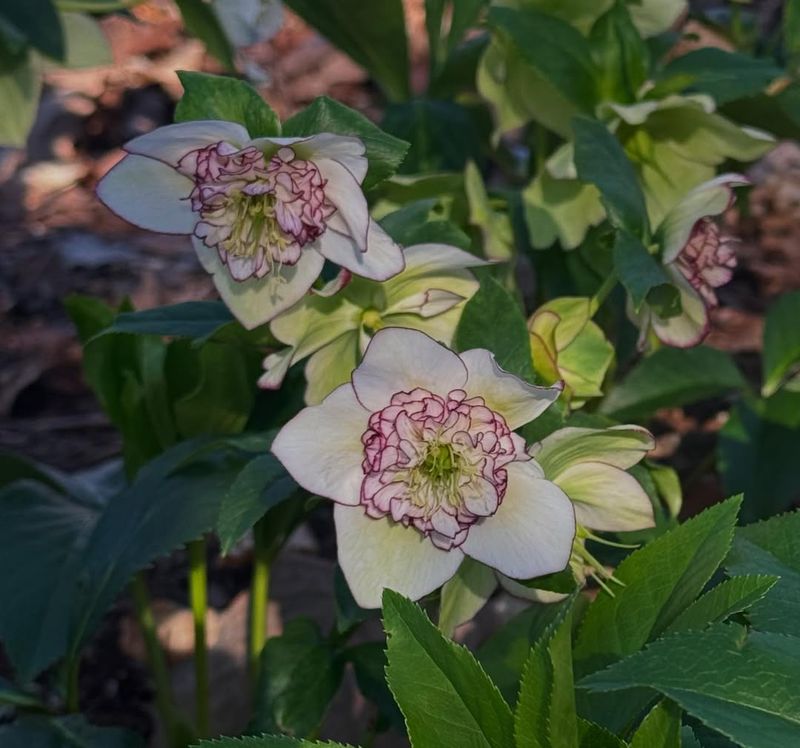Hellebores may be winter’s quiet showstoppers, but buying the wrong ones can send Pennsylvania gardeners down a path of disappointment fast.
These hardy blooms look foolproof on the nursery bench, yet a few small missteps can leave you with plants that sulk, struggle, or never flower at all.
With a little insider know-how, you can avoid the classic pitfalls and bring home hellebores that thrive through cold months and reward you with early-season color year after year.
Choosing Hellebores That Can’t Handle Pennsylvania Winters
Not all hellebore varieties survive the cold temperatures Pennsylvania experiences during winter months. Some types bred for milder climates will struggle or wither when frost arrives. Check the hardiness zone rating before purchasing any hellebore plant.
Pennsylvania sits mostly in zones 5 through 7, so pick varieties rated for at least zone 5. Oriental hellebores usually handle cold better than Corsican types.
Always ask nursery staff about winter hardiness to avoid heartbreak when spring arrives and your expensive plant never wakes up from its winter nap.
Ignoring The Mature Size When Selecting Your Plants
That adorable little hellebore in a four-inch pot looks perfect for your small garden space right now. Fast forward two years, and you’ve got a massive clump crowding out everything nearby.
Different hellebore varieties grow to vastly different sizes at maturity. Some stay compact at twelve inches wide, while others spread to three feet across. Read plant tags carefully or research online before purchasing.
Planting the wrong size hellebore means you’ll either waste space or need to dig up and relocate an established plant later, which hellebores really dislike.
Buying Hellebores In Full Bloom Without Checking Root Health
Gorgeous flowers catch your eye at the garden center, making you grab the prettiest blooming hellebore without a second thought. That stunning display might hide a weak root system that won’t establish well in your garden.
Gently tip the pot and examine the roots before buying. Healthy roots should be white or light-colored, not brown and mushy. Root-bound plants with roots circling endlessly around the pot struggle to grow outward once planted.
Sometimes a hellebore with fewer flowers but stronger roots makes a smarter purchase for long-term garden success.
Falling For Mislabeled Or Generic Hellebore Varieties
Garden centers sometimes sell hellebores with vague labels like “Hellebore Mix” or “Assorted Colors” at tempting prices. You won’t know what flower color or growth habit you’re actually getting until next season.
Named cultivars cost more but guarantee specific characteristics like double flowers, particular colors, or compact growth. If you want pink flowers to match your garden design, a mystery hellebore might bloom purple instead.
Reputable nurseries provide detailed cultivar names and accurate descriptions. Spending extra money upfront saves disappointment when your hellebore finally blooms with completely unexpected results.
Purchasing Hellebores At The Wrong Time Of Year
Grabbing hellebores during summer sales seems like scoring a great bargain. Unfortunately, these plants suffer greatly when transplanted during hot weather.
Early spring or fall provides ideal planting windows for hellebores in Pennsylvania. Cooler temperatures and regular rainfall help roots establish without stress. Summer-bought hellebores often struggle, drop leaves, and sometimes wither despite your best care efforts.
Garden centers discount struggling plants for good reason. Patient gardeners who wait for appropriate planting seasons end up with healthier hellebores that establish quickly and bloom reliably for many years ahead.
Selecting Sun-Loving Varieties For Shady Pennsylvania Gardens
Most hellebores prefer shade or partial shade, but gardeners sometimes assume all varieties share identical light requirements. Planting shade-preferring hellebores in full sun causes leaf scorch and poor performance.
Conversely, some newer hybrids tolerate more sunlight than traditional types. Match your hellebore selection to your actual garden conditions rather than wishful thinking. Observe how much sun your planting area receives throughout the day before shopping.
Bringing photos of your garden space to knowledgeable nursery staff helps them recommend appropriate varieties that will actually thrive where you plan to plant them.
Buying The Cheapest Hellebores Without Researching Quality
Bargain-bin hellebores at big box stores tempt budget-conscious gardeners every spring. However, these plants often come from mass production facilities where quality takes a backseat to quantity.
Poorly grown hellebores may carry diseases, have weak genetics, or suffer from neglect during shipping and storage. Specialty nurseries charge more but typically offer superior plants with better breeding and proper care.
A healthy fifteen-dollar hellebore that thrives for decades beats three five-dollar plants that struggle and wither within a year. Quality matters tremendously with long-lived perennials like hellebores.
Overlooking Deer Resistance When Other Garden Plants Get Eaten
Pennsylvania gardeners battle hungry deer constantly, watching expensive plants disappear overnight. Fortunately, hellebores contain compounds that deer find unpalatable and usually avoid.
If deer devour most plants in your yard, hellebores offer a rare opportunity for beautiful flowers that survive. However, some gardeners don’t realize this advantage and choose other shade plants that deer love instead. When planning purchases, prioritize deer-resistant options like hellebores for problem areas.
Desperate deer occasionally nibble hellebore leaves during harsh winters, but they rarely cause serious damage compared to their destruction of hostas, daylilies, and other deer favorites.
Grabbing Hellebores Without Considering Soil Drainage Needs
Hellebores absolutely require well-draining soil to survive and thrive in Pennsylvania gardens. Planting them in heavy clay or constantly wet areas leads to root rot and plant withering.
Before purchasing hellebores, honestly assess your soil conditions where you plan to plant them. If water puddles remain for hours after rain, hellebores will struggle there. You’ll need to amend soil with compost and create raised beds, or choose a different planting location entirely.
Many gardeners learn this lesson the hard way after expensive hellebores rot away during wet Pennsylvania springs, wishing they’d tested drainage first.

